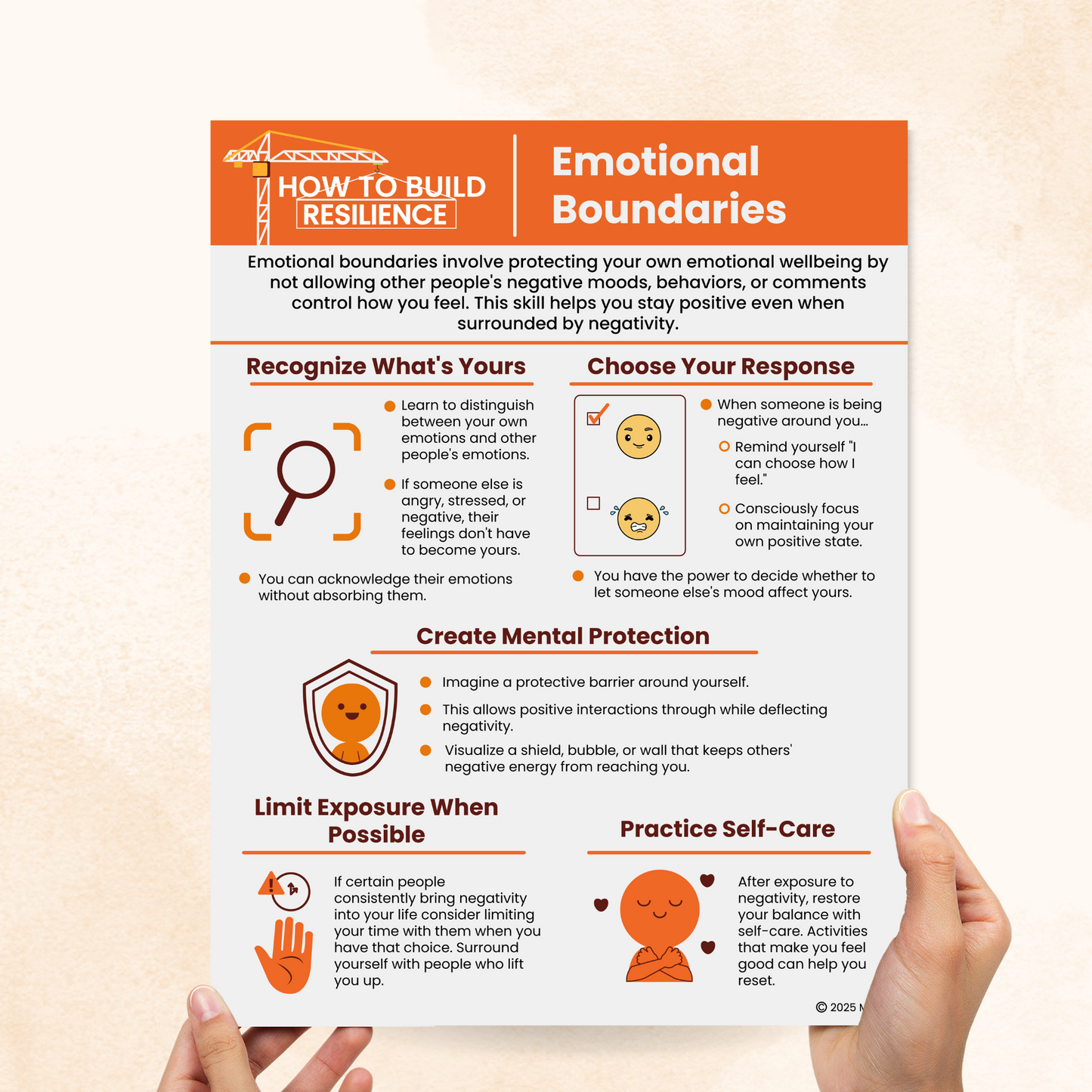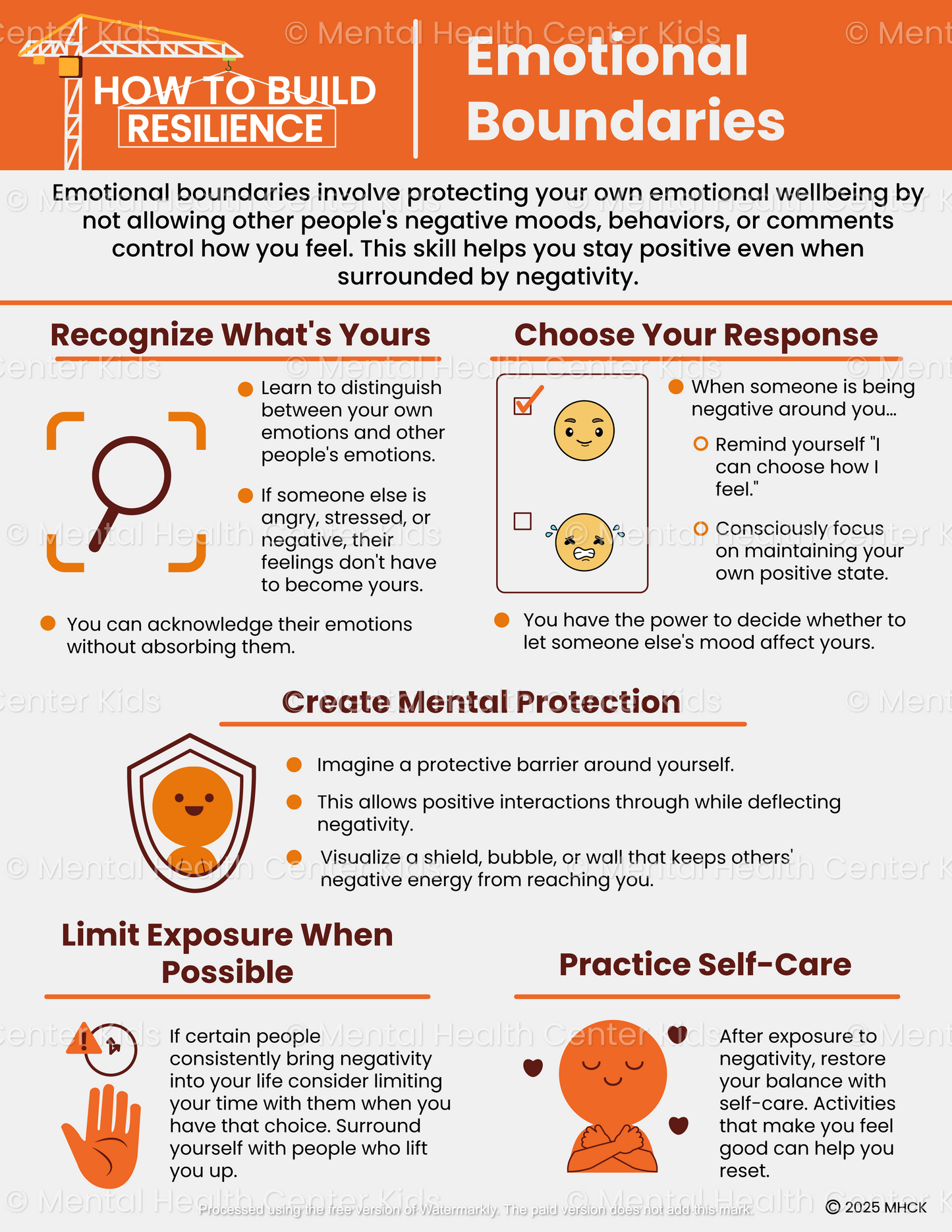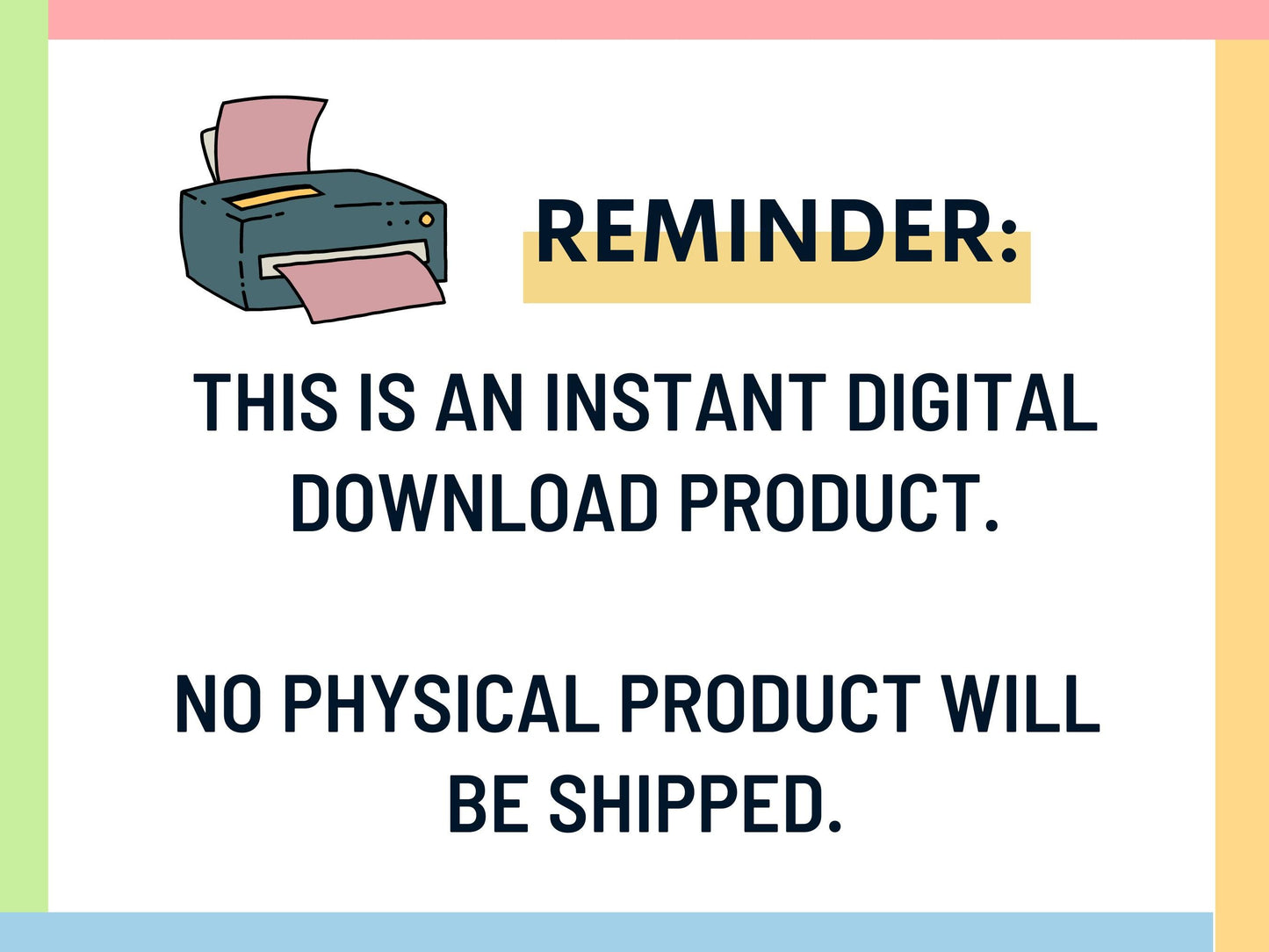Emotional Boundaries - How To Build Resilience



We are often told to “be kind,” “understand others,” or “not overreact,” but rarely are we taught how to protect our emotional space. Clients in therapuetic settings may struggle to separate their feelings from those of others. Emotional boundaries is a resilience building skill that helps clients protect their emotional wellbeing by not allowing other people’s negativity control how they feel.
The Emotional Boundaries handout introduces clear and simple ways to set emotional boundaries while maintaining kindness and connection. It teaches clients that it’s okay not to carry other people’s emotional loads, and instead, focus on noticing their feelings and responding thoughtfully. This resource includes tips like creating mental protection, practicing self-care, and limiting exposure to people who consistently bring negativity.
Practicing the strategies in this handout can help kids and teens learn to recognize that other people’s moods are not theirs to absorb or fix. Since building emotional boundaries can feel unfamiliar at first, adults can help normalize this process by modeling what it looks like.
One useful concept is finding the middle ground, where they respond with empathy while staying centered in their own emotional experience. They can draw two overlapping circles to illustrate this idea: what’s in their circle is theirs to manage, and what’s in someone else’s circle belongs to them.
*This item is an instant digital download. A link to download your files will be emailed to you once payment is confirmed.
Want more resources like this? Check out our full catalog of trauma worksheets.
References:
- Bell, C., Bierstedt, L., Hu, T. (., Ogren, M., Reider, L. B., & LoBue, V. (2024). Learning through language: The importance of emotion and mental state language for children’s social and emotional learning. Social and Emotional Learning: Research, Practice, and Policy, 4, 100061. https://doi.org/10.1016/j.sel.2024.100061
- Benson, C. (2003). The unthinkable boundaries of self: The role of negative emotional boundaries in the formation, maintenance, and transformation of identities. The Self and Others, 61-84. https://doi.org/10.5040/9798216187646.ch-005
- Chernata, T. (2024). The role of emotional intelligence in the personal boundariesformation. Personality and environmental issues, 3(3), 59-66. https://doi.org/10.31652/2786-6033-2024-3(3)-59-66
- LoBue, V., & Ogren, M. (2021). How the emotional environment shapes the emotional life of the child. Policy Insights from the Behavioral and Brain Sciences, 9(1), 137-144. https://doi.org/10.1177/23727322211067264
- Instant digital download
- File: PDF
- Size: 8.5" x 11"




